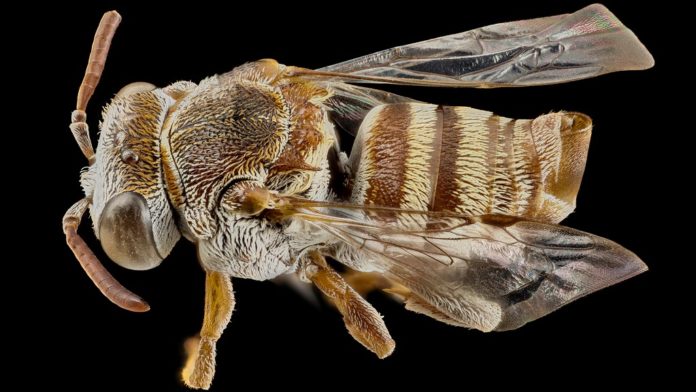York University researchers have discovered 15 new species of cuckoo bees that were hiding in plain sight. Nine of the new species were found in museums across North America and a further six in an unpublished thesis written decades ago.
All are from the genus Epeolus, bringing the total up to 43 across the continent.
Parasitic, thieving bees that are hard to spot
Named after cuckoo birds who also exhibit kleptoparasitic behaviour, these bees plant their eggs in the nests of unwitting neighbours. The newly hatched proceed to kill the host egg/larva and live off the stored pollen, all while the host bee remains totally unaware.
Cuckoo bees look more akin to wasps, lacking the fuzziness of a typical bee. This is because they do not need to collect pollen for their offspring (carried on the hair of normal bees). Cuckoo bees are also both small – between 5.5 mm to 10 mm in length – and rarer than the main species whose nests they invade, the polyester bee.
They tend not to be found near flowers but can be seen hovering close to the ground on the lookout for host nests. Given their own lack of a nest, they can occasionally be spotted taking a break on leaves in the morning.
All in all, these crafty bees go unnoticed in more ways than one.
For lead author and PhD student with the Packer Lab, Thomas Onuferko, these factors along with the extremely similar appearances of cuckoo bees added to his hunch that there was more to explore.
“It may seem surprising to some that in well-researched places like Canada and the United States there is still the potential for the discovery of new species,” says Onuferko.
“People have been aware of a few of the new species that I’m describing, but they’ve never been formally named. There is a whole bunch of other species, however, that no one knew about.”
The rarity of these bees means that knowledge of their numbers could make for an important marker of environmental health, making this discovery far from trivial.
Fresh discoveries suggest more are waiting to be found
Onuferko requested samples of genus Epeolus from museums across the U.S. and Canada where he believed secretive new species may be residing.
Although some were morphologically distinct, making them easier to identify as a unique species, many were distinguished via ‘DNA barcoding’.
Speaking to the BBC, Onuferko confirmed that there are undoubtedly more species to discover out there. He also believes that advances in technology will facilitate new discoveries.
“There are about 20,000 described species of bees worldwide. That’s more than all birds and mammals combined,” says Onuferko.
“I’m certain there are many more that are waiting to be discovered.”








































